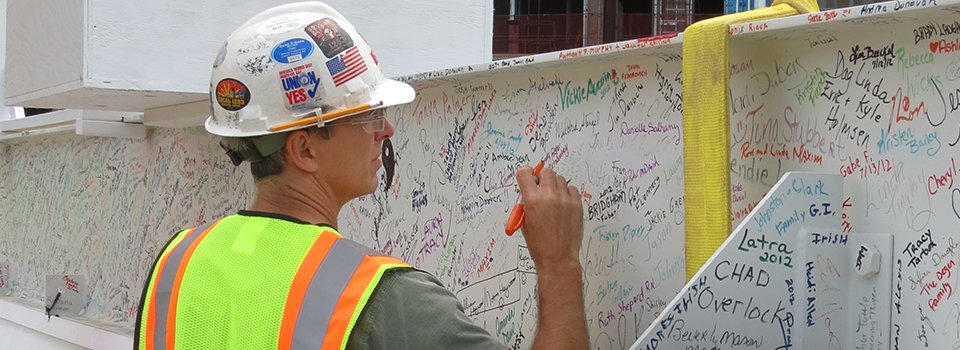Partnerships and Pride

A true 'village approach' to designing and building the Alfond Center for Health
The Dalai Lama said, “Just as ripples spread out when a single pebble is dropped into water, the actions of individuals can have far-reaching effects.”
Ten years later, this is still proving true for those involved in building the Alfond Center for Health (ACH) – and for the construction project itself.
“The project gave my team the foundation to start JF Scott Construction,” explains John Scott, who was vice president of H.P. Cummings at the time. H.P. Cummings teamed up with national partner Robins + Morton for the $312 million ACH project.
“From a construction perspective, the size of the job and collaborative approach allowed some quality contractors to take their services to the next level.”
Craig Piper, project manager for Portland-based SMRT Architects and Engineers, said the project led SMRT to personalize its internal design process to each architectural project.
“Before drawing a single line, we work to understand who you are, what drives the success of the new facility, and how you envision your future,” Craig says. “We create a culture where it is safe to voice differing points of view, understanding that the best design solutions come from reconciling and balancing different perspectives, wants and needs, and that started with the Alfond Center for Health process.”
The process Craig refers to is Integrated Project Delivery (IPD). With IPD, everyone involved in the project - designer, builder and owner - takes their profit and puts it at risk, so all the goals are shared by everyone on the team.
“Everyone had skin in the game,” recalls Lescar Beane, operations manager for E.S. Boulos Company, which was the electrical and voice, data, video (VDV) contractor. “Being able to communicate freely, and getting buy-in on all aspects of the project up front from all team players really pushed the project to success.”
“Our philosophy at MaineGeneral is that, if we want products to come out well, we need to involve the people who do the work," explains Paul Stein, MaineGeneral’s chief operations officer.
“Areas were designed by the people who worked in them. We mocked up patient rooms and got input from actual patients. We were able to get things right as a result of this inclusive process. And we finished nine months ahead of schedule and under budget. It was a win-win for everyone, especially the community.”
LeAnne Rogers worked for Robins + Morton doing a variety of administrative duties when the ACH was built.
“I’ve been in construction for 30 years, and this project was the most unique I’d been a part of because of IPD. There were high-level decisions made with everyone at the table, in real time. Nurses, for example, could meet with the architects and structural people and decide to move walls or locate things in certain places, or find out why they couldn’t. They had a voice, they felt heard. Their hearts were in this. I feel so proud that I was part of this project.”
For many people, the ACH project got deeply personal. The constructor became the patient when LeAnne was diagnosed with cancer and went to the Harold Alfond Center for Cancer Care for treatment. While fighting cancer, she had appendicitis and spent time at the old Augusta hospital (now the Ballard Center).
“Because I received care as a patient during this time, I was easily able to put myself in the caregivers’ shoes and saw firsthand why we really needed a new hospital to take better care of patients,” LeAnne says.
For Lescar, the ACH construction project was a difficult time in his life.
“My wife was diagnosed with cancer in 2006 and continued to fight the battle the entire time of the project. She passed away in 2012 so this project holds a special place in my heart; she actually has a brick there in her memory.”
John Scott is most proud that the project was done almost entirely with local workers, creating hundreds of jobs and giving Central Maine an economic shot in the arm. Eighty-four percent of workers and contractors were from Maine.
“Everyone who worked on the project left feeling proud of the work, and the sense of teamwork helped continue their connections and friendships to this day,” Paul says.
“It was a big responsibility, changing the health care dynamics for the Kennebec Valley by building the ACH and transforming the Thayer Center for Health in Waterville into a comprehensive outpatient center. We became one team to ensure people can get the care they need close to home, not only for now but for generations to come.”
Rick Albert, MaineGeneral’s director of plant operations, agrees.
“When I run into people who worked on the project, they tell me they miss being on this job because it was so collaborative. And when they come here for care, they are so proud of their part in building the facility. I grew up in Augusta. When you work on a project like this in your own community, and can walk in and say ‘I did this,’ it’s pretty special.”